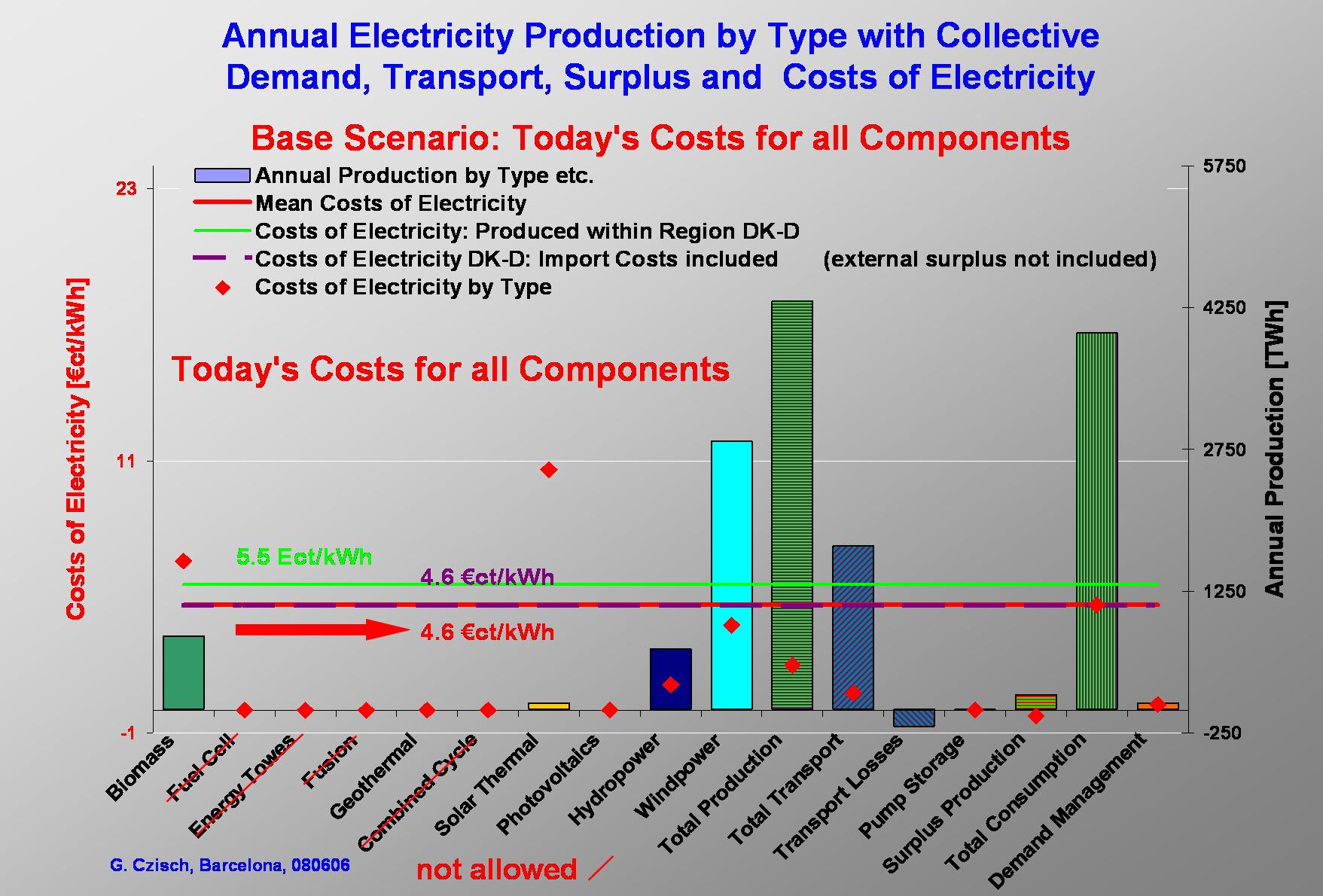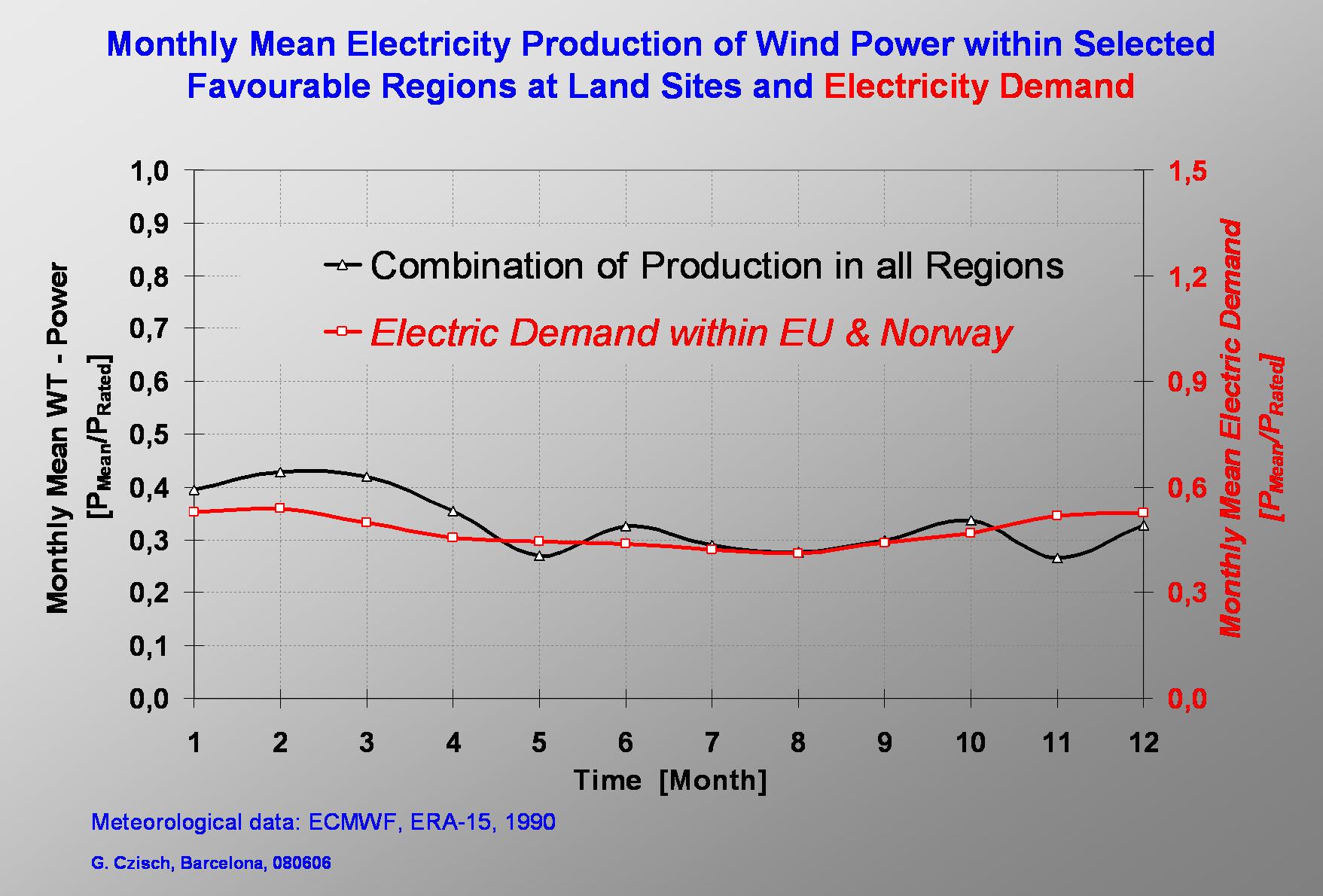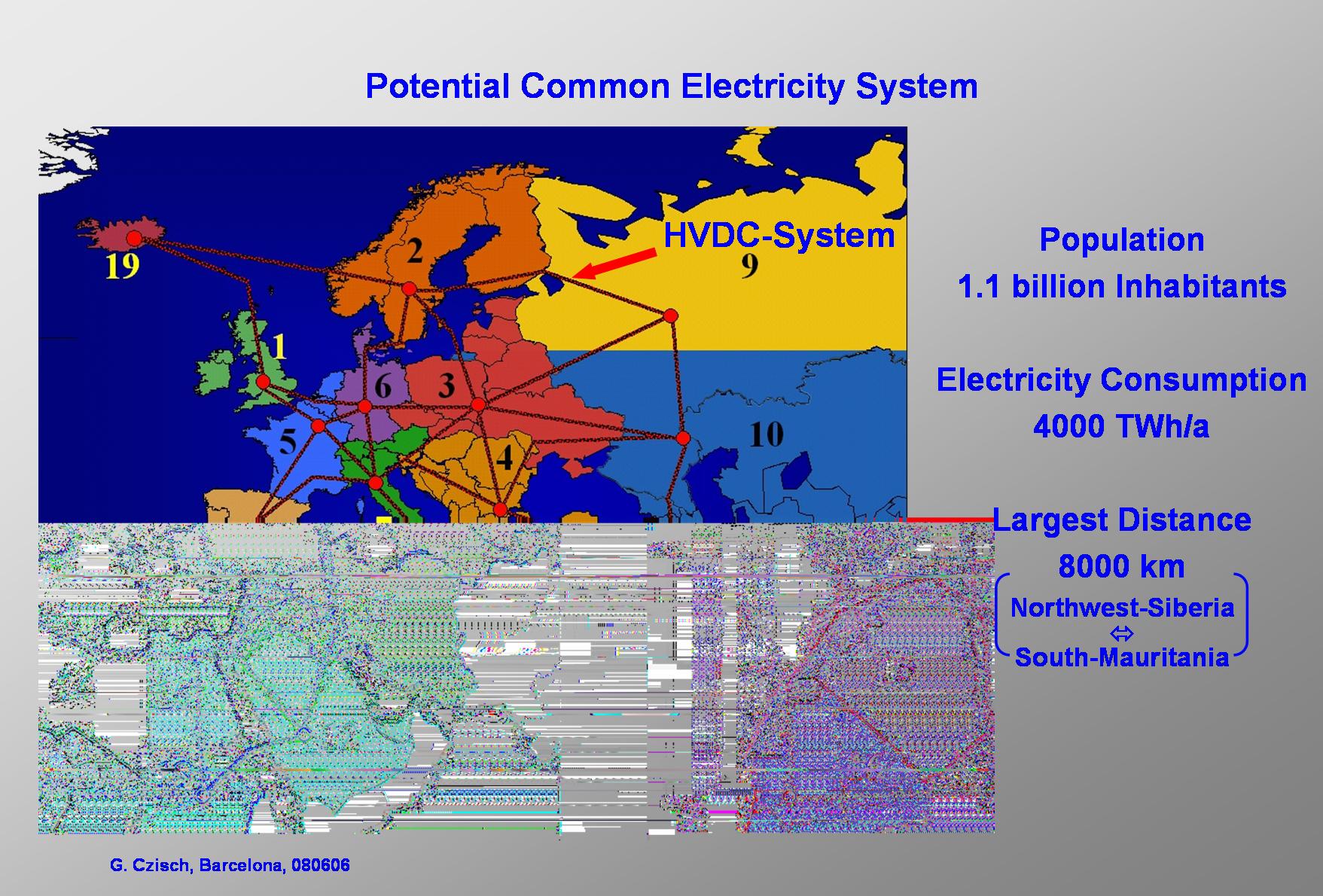Lecture Barcelona 2008 - Slide 18
Aus Transnational-Renewables
| Lecture Magdeburg [2001,en], Vortrag Lübeck [2006,de], Lecture Barcelona [2008,en], Vortrag EWEA 2000 [2000,en] |
| Vorstellung regenerativer Energien: Biomasse, Windenergie, Fallwindkraftwerke, Geothermie, Wasserkraft, Solarenergie |
| Overview | 
|
Scenarios for a future electricity supply
Scenarios for a future electricity supply entirely with renewable energies have been developed for the region shown in this figure. The supply area contains approx. 1.1 billion inhabitants with an electricity consumption of roughly 4000 TWh/a. This part of the world has been analysed to determine the available potentials for a future electricity system. Various concepts have been studied for providing renewable energies to Europe and neighbouring regions. This process has taken into account ECMWF data as the main meteorological basis and the population density as a restrictive factor for the wind energy potentials or estimated roof areas in all countries within the shown regions for determining the roof top photovoltaic potentials, combined with data on solar irradiation, wind speeds, and also temperatures used e.g. for photovoltaic electricity production and for solar thermal electricity production. Also other renewable resources such as biomass, geothermal potentials and hydropower have been investigated or included at the level of current knowledge. Mathematical optimisation routines have been applied to the question of which renewable resources with their individual temporal behaviour at different sites and with different yields should be used, and how selection should be made to achieve optimum cost performance. (A linear optimisation with roughly 2.45 million restrictions and about 2.2 million free variables was employed to find the best combination in each scenario.). The optimisation takes into account the temporal behaviour of the combined consumption of all countries within every individual region shown here as well as all requirements imposed by resource-constrained production. Both sets of data, electricity demand and temporal behaviour of the possible production, have been compiled for optimisation (using time series with three-hour intervals) for all of the 19 regions to be supplied with electricity. The optimisation process ensures that supply will meet demand at any time, while determining if and to which extent any potential source is to be used, and how every part of the supply system will operate, including the dimensioning and operation of a HVDC grid that is superimposed on the current grid infrastructure. The criterion of optimisation is the minimization of overall annual costs of electricity when fed into the regional high-voltage grids, enabling these costs to be compared directly with those from regular power stations feeding into the conventional AC-high-voltage grid.


